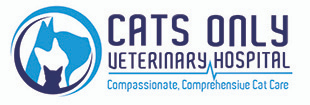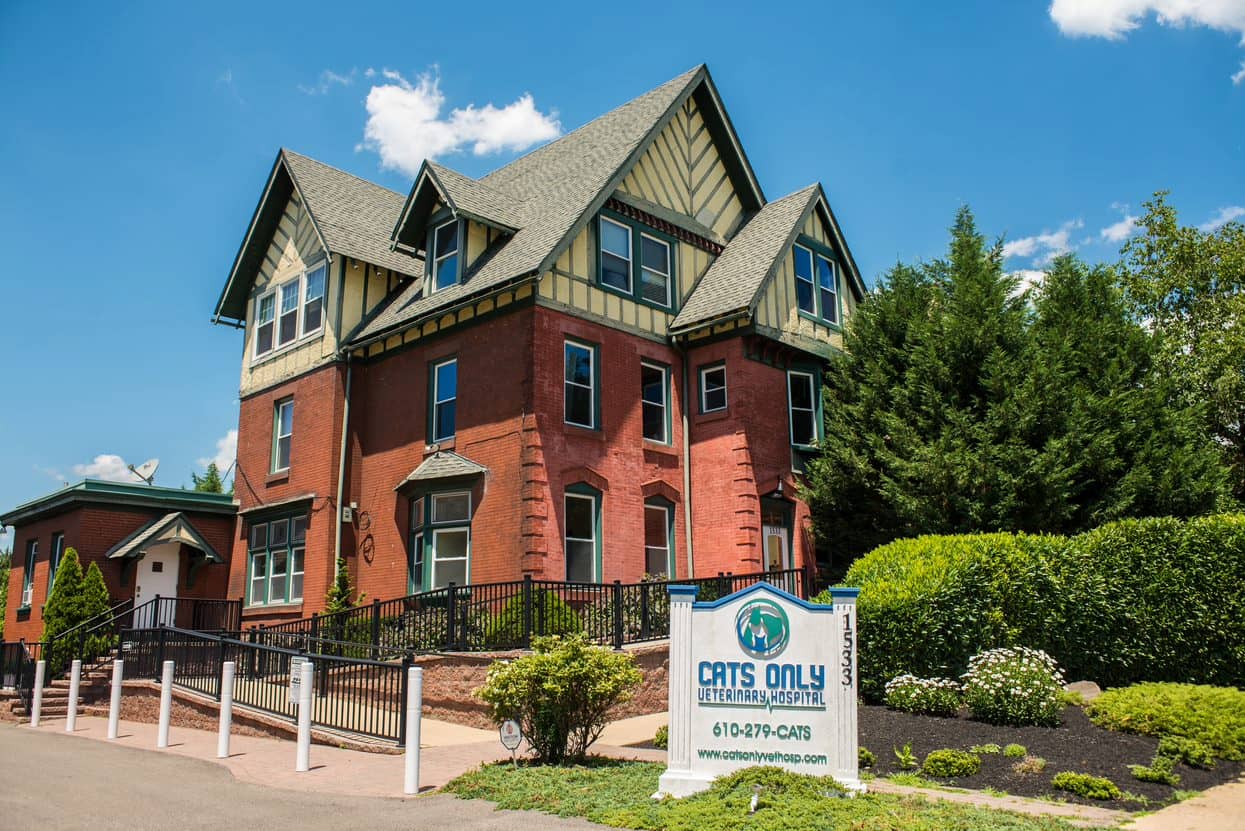Vaccination

Our hospital only uses non-adjuvanted vaccines. An adjuvant is added to a vaccine to stimulate the immune system to react to the vaccine and thus increase the effectiveness of the vaccine (i.e. to make antibodies to protect your cat in the future). Unfortunately, many of the adjuvanted vaccines have come under scrutiny and may be causing a certain type of cancer (fibrosarcoma) in cats. Even though this vaccine-related fibrosarcoma is rare (about 1 in 10,000 cats), it is an aggressive tumor that is difficult to treat. Why take the risk? Our hospital does not use any adjuvanted vaccines for this reason. We strictly follow the American Association of Feline Practitioners (AAFP) Vaccine Guidelines. The AAFP recommends core vaccines (rabies vaccine, FVRCP vaccine) to all cats. The AAFP recommends the non-core feline leukemia vaccine only to at risk cats (i.e. cats that spend any time outside, cats that interact with indoor/outdoor cats). Please visit their website for more information:

Rabies Vaccine
Our hospital uses the annual Merial PUREVAX® feline rabies vaccine to protect cats against the rabies virus. This vaccine is non-adjuvanted and is currently the safest vaccine available. This vaccine is required for all cats.
Rabies virus is a fatal infection typically transmitted through bite wounds, open cuts in the skin or onto mucous membranes (i.e. saliva). There are two forms of rabies: (1) a “furious” or “mad” form and (2) a “paralytic” or “dumb” form. Most people are familiar with the first form and clinical signs may include aggressive behavior, sudden change in behavior, attacking, biting, excitation, sensitivity to light, irritability or seizures. The second form may present with signs such as weakness, paralysis, depression, lethargy or anorexia. There is no treatment available once your cat is affected with the rabies virus and clinical signs are apparent.
This virus has very real and serious human and pet implications.
Some cat owners are under the impression that indoor only cats do not need to be vaccinated against rabies. ALL cats, including indoor only cats, are required to be vaccinated against rabies. Some points of interest include: (1) There is a small, real potential for rabies to enter your household. Wildlife such as bats or rodents may bring the virus into your household and expose your cat to the rabies virus. (2) There is a legal liability should an unvaccinated animal bite or scratch a person. (3) Rabies is a fatal disease for both humans and pets.
FVRCP (Distemper) Vaccine
Our hospital uses the Merial PUREVAX® feline FVRCP vaccine to protect cats against three viruses: feline herpesvirus, feline calicivirus and feline panleukopenia. The initial kitten series includes vaccine administration every 3-4 weeks with the last vaccine administered after 16 weeks of age. This booster vaccine is administered at 1 year of age and then every 3 years. This vaccine is required for all cats.
Feline Herpesvirus
You may have seen this virus referred to as FHV-1 or Feline Viral Rhinotracheitis (FVRCP). All cats are susceptible to an infection, particularly young kittens and immunocompromised cats. This virus can be very contagious and easily passed from one cat to another cat. It is transmitted by direct cat-to-cat contact, through sneezing over short distances or from environmental contamination. This virus is known to become latent in some cats hiding in the nerves of the head. These carrier cats may have long term infections that come out in times of stress or with treatment that suppresses the immune system. Common clinical signs are associated with upper respiratory infection signs such as sneezing, eye discharge and nose discharge (similar to the common cold in humans).
Feline Calicivirus
You may have seen this virus referred to as FCV (FVRCP). All cats are susceptible to an infection, particularly young kittens and immunocompromised cats. This virus can be very contagious and easily passed from one cat to another cat. It is transmitted by direct cat-to-cat contact, through sneezing over short distances or from environmental contamination. Common clinical signs associated with this virus include respiratory signs (sneezing, eye discharge, nose discharge), oral signs (ulcers in the mouth) and signs relating to the joints (lameness, stiffness). Recent outbreaks of a new, fast-acting, severe strain of calicivirus (VS-FCV) have been occurring and are associated with a high mortality rate.
Feline Panleukopenia
You may have seen this virus referred to as FPV or feline distemper (FVRCP). This parvovirus attacks rapidly dividing cells in the body (intestine, bone marrow, brain) and can potentially cause very severe disease including death. When the virus attacks the bone marrow, the body cannot produce white blood cells to fight infections. When all the white blood cells are low, this condition is termed panleukopenia (pan = all, leuko = white or white blood cell, enia = low). Hence then name feline panleukopenia. Clinical signs may include severe diarrhea, vomiting, dehydration, fever, lethargy and anorexia. The immune system is often compromised and secondary infections may occur. This virus can be very contagious and is typically transmitted by the fecal-oral route but may be transmitted through any body secretions (i.e. urine, saliva, mucus, vomit). This virus is very resistant in the environment and may survive for over a year.
FeLV (Feline Leukemia) Vaccine
Our hospital uses the annual, non-adjuvanted Merial PUREVAX® FeLV vaccine to protect cats against the feline leukemia virus. The AAFP (American Association of Feline Practitioners) has recommended vaccinating all kittens against FeLV in their first year of life. After the initial kitten series (2 vaccinations 3-4 weeks apart), this vaccine is administered to all cats 1 year later and then only to cats that spend any amount of time outdoors or are exposed to FeLV positive cats. A FeLV test is strongly recommended prior to vaccination.
Feline leukemia is one of the major causes of illness and death in cats. The feline leukemia virus is typically transmitted through saliva or nose secretions associated with mutual grooming, sharing food or water dishes, or biting. This virus has been known to remain latent in the bone marrow making diagnosis difficult. Most cats infected with FeLV will not survive to the age of 2-3. Clinical signs associated with a viral infection are not specific and may include immune-mediated diseases, tumors, bone marrow disorders (i.e. anemia or a low number of red blood cells, decreased production of white blood cells, decreased production of platelets), and secondary infections.
Vaccine Reactions
We use the safest vaccines currently available. We have chosen the above vaccines and follow the current AAFP Vaccine Guidelines to (1) minimize the number of vaccines we are administering to our patients and (2) to minimize the number of side effects to our patients. Even with our best intentions, a very few number of cats may still have a vaccine reaction. Below is a summary of these reactions and what you should monitor. If your cat has had a vaccine reaction, we will need to tailor a specific vaccine protocol for your individual cat to help avoid such reactions in the future.
Mild vaccine reactions, if they occur, may last for a couple of days after the vaccine is administered and may include:
- Mild decrease in activity
- Mild pain or soreness at the injection site
- Mild decrease in appetite
- A small lump at the injection site
- Mild upper respiratory infection
Severe vaccine reactions that occur within a few minutes to a few hours after vaccine administration. If you notice any of these severe vaccine reactions, veterinary attention is required IMMEDIATELY.
- Vomiting / Diarrhea
- Fever
- Difficulty breathing
- Swelling of the face
- Profound lethargy

